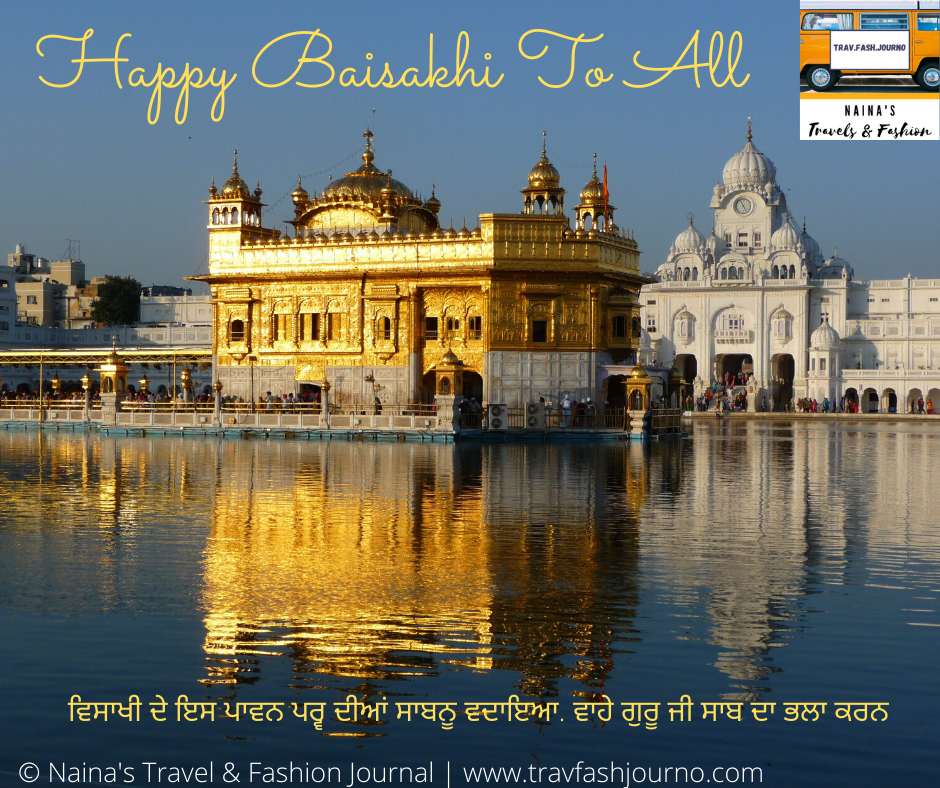Happy Baisakhi/Vaisakhi: April 13, 2020
Baishakhi/Vaisakhi History & Celebration

Photo Courtesy: https://www.yourselfquotes.com/happy-baisakhi-vaisakhi-quotes-wishes/
Baisakhi also is known as Vaishakhi. It is a historical and religious festival in Sikhism. On April 13 each year, Vaisakhi (a celebration of joy, hope & harvest) is celebrated by those who find it dear to their hearts. Baisakhi marks the Sikh New Year and commemorates the formation of Khalsa Panth of warriors under Guru Gobind Singh in 1699. It is also a spring harvest festival for the Sikhs. How is Vaisakhi Important? The day of Vaisakhi is a Sikh festival marking the birth of Sikh order started after the persecution and execution of Guru Tegh Bahadur for refusing to convert to Islam under the orders of the Mughal Emperor Aurangzeb.
Trivia: Baisakhi is one of the three Hindu festivals chosen by Guru Amar Das (who was the third of the Ten Gurus of Sikhism) to be celebrated by Sikhs (the others being Maha Shivaratri and Diwali).
History of Baisakhi/Vaisakhi

Photo Courtesy:
https://english.newstracklive.com/news/guru-tegh-bahadur-guru-tegh-bahadur-ji-shaheedi-diwas-aurangzeb-killed-him-martyrdom-of-guru-tegh-bahadur-sc91-nu-1049964-1.html
It all started with the martyrdom of Guru Teg Bahadur (the ninth Sikh Guru) who was publicly beheaded by the Aurungzeb (the Mughal ruler). Aurungzeb’s wish was to spread Islam across India. But, Guru Tegh Bahadur stood up for the rights of Hindus and Sikhs. With this, the Mughals found him as a threat. After the death of Guru Teg Bahadur, his son, Guru Gobind Singh became the next Guru of the Sikhs. In 1699 the tenth (10th) guru, Guru Gobind Singh, chose Vaisakhi as the occasion to transform the Sikhs into a family of soldier saints, known as the Khalsa Panth.

Photo Courtesy:
https://www.hindustantimes.com/more-lifestyle/guru-gobind-singh-jayanti-2020-history-significance-and-teachings-of-the-tenth-sikh-guru/story-gJAXb2ICo1xBc4LRbUKUiI.html
He had found the Khalsa Panth in front of many disciples at Anandpur Sahib (Anandpur, Edge of Shivalik Hills, Punjab). During the festival, Guru Gobind Singh came out of a tent carrying a sword. He challenged any Sikh who was prepared to give his life to come into the tent. The Guru returned alone with his sword covered in blood. He then requested another volunteer and repeated the same action four times until five men disappeared into the tent. The crowd was wondering what had happened to these five men. They soon had come out of the tent wearing turbans. These five men came to be known as the Panj Piare, or ‘Beloved Five’. The men were then baptized (infused into the Sikh doctrine) into the Khalsa by the Guru.
How is Sikh/Baisakhi celebrated in India?
Major celebrations of Vaisakhi are organized at Golden Temple, Amritsar.
Most Sikhs come in large numbers to visit the Golden Temple on the occasion.

Photo Courtesy: Golden Temple, Amritsar
In villages of Punjab & Haryana, Vaisakhi is celebrated with performances of bhangra and gidda by men and women, respectively. Along with commemorating the birth of Khalsa, Sikhs also thank the gurus for the ready new harvest for summer. With joy and devotion, the Sikhs take an early bath, wear new clothes and visit the neighborhood gurdwara to take part in the special prayer meet marked for the day. After a special ardas of kirtans and discourses, kada prasad is distributed amongst all present. Later, people sit in rows to relish the langar and served by kar sevaks or volunteers.

Photo Courtesy: https://www.yourselfquotes.com/happy-baisakhi-vaisakhi-quotes-wishes/
Comments are closed.